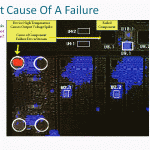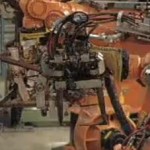Register now or log in to join your professional community.
Pick -up the right choice
A. Vibration analysis
B. Temperature trending
C. Lube analysis
D. Non of the above
E. All of the above

As I recall the customer reports I had to put together included E) All of the above; as well as wear and tear of major components.
The report also included pictures of the machine, the area where it been standing, how clean it been kept, foundation and rail damage if there been any in order to make comparisons form the last visit .. our service contract usually had a minimum of1-4 visits per year depending on the customers requiremets

The answer is E. All of the above

The techniques include vibration analysis, oil analysis, thermal imaging, and equipment observation.
E. All of the above

The correct answer
E. All of the above
Thanks for the invite

All of the above will include D too.
Therefore, I would say All of the above except option D.

My answer is choice (E) all of the above

Below are some of the more common predictive maintenance tools;
Thermal Imaging

Predictive Maintenance – Thermal Imaging
Most people are familiar with the idea of thermal imaging using infrared; this technique allows you to use infrared thermal imaging to take a thermal image of your equipment to identify any hotspots. Worn components and malfunctioning electrical circuits will generate heat that will show up on the thermal image as a hot spot enabling you to pinpoint any potential problems, often before they lead to a breakdown or cause significant damage.
Vibration Analysis
By using either a hand held vibration analyzer or using monitors built into the machinery you can monitor the vibrations of a machine. As things such as shafts and bearings begin to wear and fail they will generate different vibration patterns which can be recognized by trained individuals. Vibration analysis can be very accurate and can quickly identify problems, comparing the readings against known failure modes can pinpoint exactly where problems are occurring.
Sonic and ultrasonic analysis
This works in much the same way as vibration analysis, with the machines vibrations creating sounds (often outside of the range of our hearing) that can be monitored to allow us to “see” problems as they start to appear.
We can also use ultrasonic analysis to find cracks and poor welds in structures before they become visible of cause a significant problem
Oil Analysis
Oil Analysis is conducted to check the condition of the oil itself and see what other particles and liquids are present. It can quickly highlight leaks of other fluids such as coolant even if very small and the particles of metal components can be measured and identified to show what parts of the machine are wearing and by how much.
Emission TestingEmission testing of waste gases and effluent is not just for environmental purposes, the composition of gases and what is present in your effluent can tell you a lot about the current state of your machinery and identify problems as the start rather than have them become full scale breakdowns. Many companies have to have processes in place for these purposes and can benefit from this additional check on their processes
Condition Monitoring

Prevent Breakdowns
You can fit sensors directly to the machines to measure the above items as well as monitoring the various process variables such as load on motors and so on. All of these can be automatically measured and monitored either through a central system or even remotely by an outside company responsible for monitoring your equipment.

If I understand what all is, then I would say E, all of the above

I agree with MR vinod jetley. thanks.

I'm not aware about mechanical maintenance but I gained good information from the Q & Answers, Thanks



